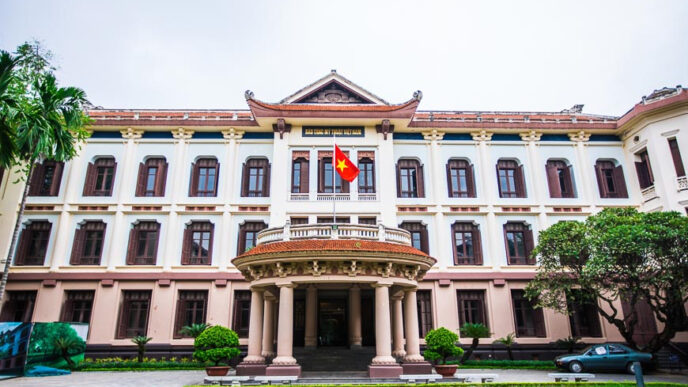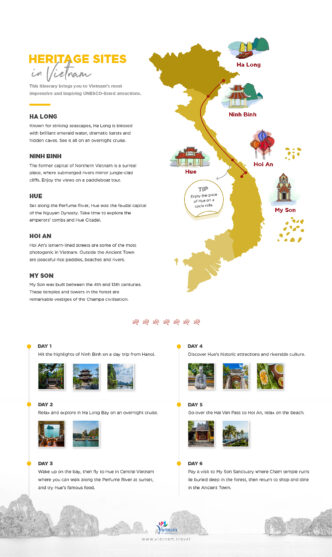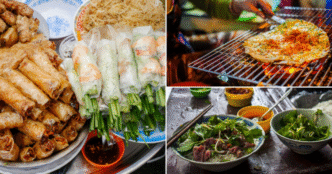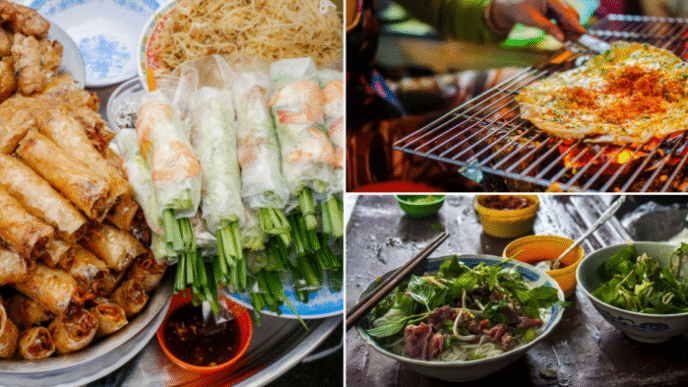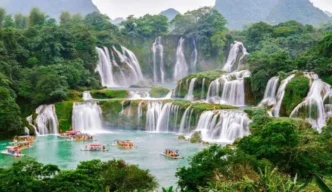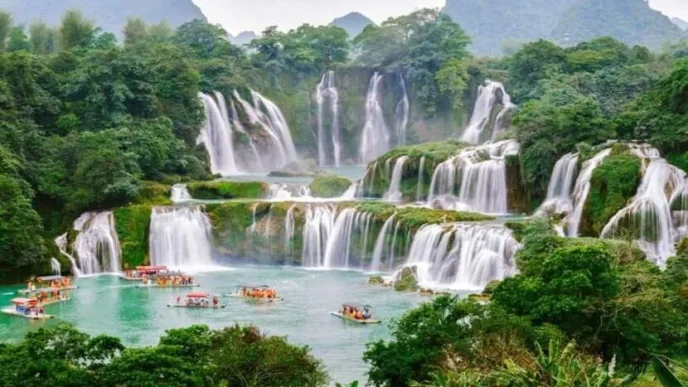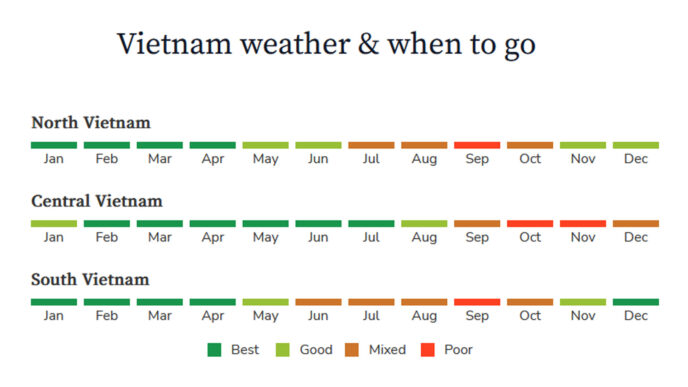Best Ho Chi Minh City Spots: A Comprehensive Guide to Must-Visit Attractions
Ho Chi Minh City (formerly Saigon) is Vietnam’s largest and most dynamic metropolis, filled with a mix of modern skyscrapers, historic landmarks, and vibrant street markets. This bustling city is a blend of the old and new, offering visitors a fascinating glimpse into Vietnam’s rich culture, history, and future. Whether you’re a history buff, foodie, or adventure seeker, Ho Chi Minh City has something for everyone.
In this article, we’ll explore the best spots in Ho Chi Minh City that you should definitely include in your travel itinerary. From historical landmarks to modern attractions, here’s a detailed guide to help you plan your visit.
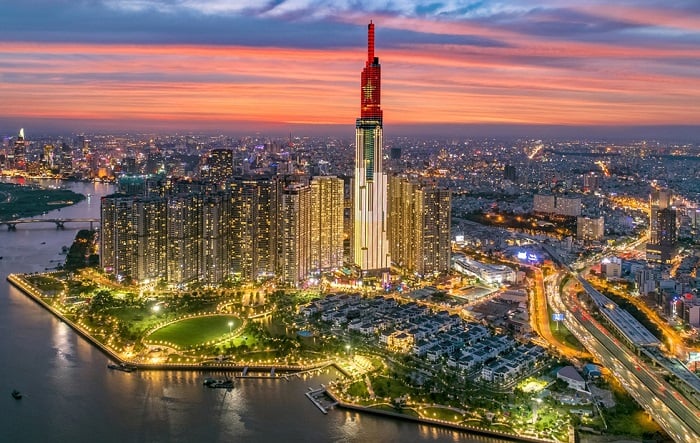
1. War Remnants Museum
A visit to the War Remnants Museum is essential for understanding the historical context of the Vietnam War. Located in the heart of Ho Chi Minh City, this museum showcases a vast collection of photographs, military equipment, and war relics that document the brutal history of the war.
The exhibits focus on the impact of the conflict on both soldiers and civilians. Among the most powerful exhibits is the tiger cage, which was used to imprison political prisoners during the war. The museum offers a sobering but important experience that provides insight into Vietnam’s recent past.
Tip: Allocate about 1-2 hours to explore the museum, as there is a lot of information to absorb.
2. Notre-Dame Cathedral Basilica of Saigon
The Notre-Dame Cathedral Basilica of Saigon is one of Ho Chi Minh City’s most iconic landmarks. Built during the French colonial period, this cathedral is a stunning example of French Gothic architecture. It features beautiful stained-glass windows and a distinctive red-brick exterior.
Located in Dong Khoi Street, the cathedral is in the heart of the city and is easily accessible. It’s a great place to visit for both architectural enthusiasts and those looking for a peaceful moment away from the city’s hustle and bustle.
Why You Should Visit:
-
The impressive façade with twin bell towers.
-
The cathedral is still an active place of worship, so visitors are asked to be respectful.

3. Ben Thanh Market
If you’re looking for an authentic Vietnamese market experience, look no further than Ben Thanh Market. Located in District 1, this bustling market is a paradise for shopping lovers, offering everything from local handicrafts and souvenirs to fresh produce and street food.
This market is a great place to pick up unique items like silk garments, lacquerware, and local spices. Don’t forget to try some local dishes at the food stalls, like Bánh Mì (Vietnamese sandwich) and Pho (Vietnamese noodle soup).
Tips for Shopping at Ben Thanh:
-
Be ready to haggle for better prices.
-
Visit early in the morning to avoid the crowds.
4. Cu Chi Tunnels
Located about 70 kilometers from Ho Chi Minh City, the Cu Chi Tunnels are an extensive network of underground tunnels that were used by the Viet Cong during the Vietnam War. This historical site is a must-visit for anyone interested in the war and Vietnam’s history.
The tunnels were used for hiding, living, and conducting military operations. Today, visitors can tour the tunnels and even crawl through some of them to experience what life was like for the soldiers during the war.
Tip: The tunnels can get quite narrow and claustrophobic, so be prepared if you decide to crawl through them.

5. Saigon Central Post Office
Another beautiful example of French colonial architecture, the Saigon Central Post Office is a must-see for anyone visiting the city. Designed by Gustave Eiffel, the same architect behind the Eiffel Tower, this post office is a historical and architectural gem.
Its interior is equally impressive, with grand arches, a large mural of Vietnam, and intricate tile work. It’s still an operational post office, and visitors can send postcards or shop for local souvenirs.
Why Visit:
-
The grand design and historical significance.
-
A great spot for photos, with its majestic ceiling and vintage feel.
6. Jade Emperor Pagoda
For a taste of Ho Chi Minh City’s spiritual side, visit the Jade Emperor Pagoda. This beautiful temple is dedicated to the Jade Emperor, one of the most important figures in Vietnamese Buddhism. The pagoda is renowned for its intricate carvings, vibrant colors, and serene atmosphere.
The pagoda is also known for its stunning statues of Buddhist deities, including a large statue of the Jade Emperor. Visitors can take a moment to meditate or simply admire the peaceful surroundings.
Tip: The pagoda is best visited in the early morning when the light filters through the stained-glass windows, creating a tranquil ambiance.
7. Bitexco Tower Sky Deck
For a bird’s-eye view of Ho Chi Minh City, head to the Bitexco Tower Sky Deck, located in the city’s tallest skyscraper. The tower offers panoramic views of the entire city, the Saigon River, and the surrounding countryside.
Visitors can enjoy a coffee or cocktail at the Sky Deck’s bar while soaking in the stunning views. The experience is perfect for both daytime sightseeing and evening city views when the city lights are shining.
Why You Should Visit:
-
Unmatched views of the city and river.
-
A great spot for photography, especially at sunset.

8. Reunification Palace
The Reunification Palace (also known as the Independence Palace) is one of the most important historical sites in Ho Chi Minh City. The palace was the home and workplace of the president of South Vietnam during the Vietnam War and is now a museum.
The palace’s furniture and decor have been preserved exactly as they were on the day the war ended in 1975, offering a glimpse into the final days of the conflict. The palace is also home to a number of bunkers, tunnels, and a helicopter pad.
Tip: Guided tours are available to help you understand the historical significance of the site.
9. District 1 – The Heart of Ho Chi Minh City
District 1 is the bustling heart of Ho Chi Minh City, where you’ll find most of the city’s modern attractions, shopping centers, and restaurants. The area is a great place to explore, with its mix of colonial-era buildings and contemporary skyscrapers.
You’ll also find the Saigon Opera House, Dong Khoi Street, and many luxury hotels here. If you’re interested in shopping, the area is home to some of the best malls and boutiques in the city.
10. Pham Ngu Lao Street
For a more laid-back atmosphere, head to Pham Ngu Lao Street, often referred to as the backpacker district. This street is filled with hostels, bars, and budget-friendly eateries, making it a popular area for backpackers and travelers on a budget.
Despite its more relaxed vibe, Pham Ngu Lao offers plenty of opportunities to sample local food, try Vietnamese coffee, and shop for souvenirs.
Frequently Asked Questions (FAQs)
1. What is the best time to visit Ho Chi Minh City?
The best time to visit Ho Chi Minh City is from December to April, when the weather is dry and sunny. The rainy season lasts from May to November, so it’s best to avoid visiting during that time if you want to enjoy outdoor activities.
2. How do I get around Ho Chi Minh City?
Ho Chi Minh City has a variety of transportation options, including taxis, motorbike taxis, and ride-hailing apps like Grab. You can also rent a motorbike if you’re feeling adventurous, but always be cautious of traffic.
3. Is it safe to walk around Ho Chi Minh City?
Yes, Ho Chi Minh City is generally safe for tourists. However, it’s important to be cautious of your belongings, especially in crowded areas or while crossing the street. Always be aware of your surroundings.
Conclusion
Ho Chi Minh City is a city of contrasts, where history and modernity coexist in perfect harmony. From the War Remnants Museum to the Reunification Palace, the city is full of significant landmarks that tell the story of Vietnam’s past and present. Whether you’re interested in culture, history, or food, Ho Chi Minh City is a vibrant and exciting destination with endless things to see and do.
So, pack your bags and start your adventure in this dynamic city where history, culture, and modernity meet!


